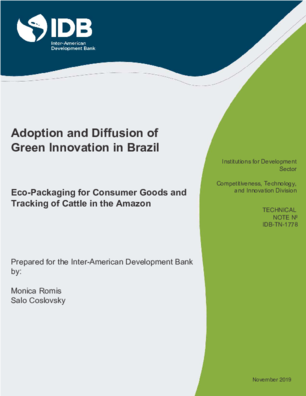Adoption and Diffusion of Green Innovation in Brazil: Eco-packaging for Consumer Goods and Tracking of Cattle in the Amazon
Date
Nov 2019
How do innovative green technologies emerge and diffuse throughout an economy, and how can public policy affect this process? This paper draws from two case studies to reverse engineer how certain firms adopted green technologies in Brazil: (i) eco-packaging to reduce net waste in the consumer goods industry and (ii) the monitoring and tracking of cattle to reduce deforestation in the Amazon. These green products were, as is often the case, more expensive to produce, and consumers were often reluctant to pay more for them just because they were greener; indeed, consumers could even find them to be less attractive than conventional alternatives. Why did the innovations nevertheless emerge? Adoption hinged on the existence of an “innovation space,” a combination of factors that allowed firms to ignore market pressures. In some cases, these firms saw an advantage in investing in green products to build brand equity. In other cases, government policies in the form of price controls, subsidies, public investment, and product regulations reduced competitive pressures.




